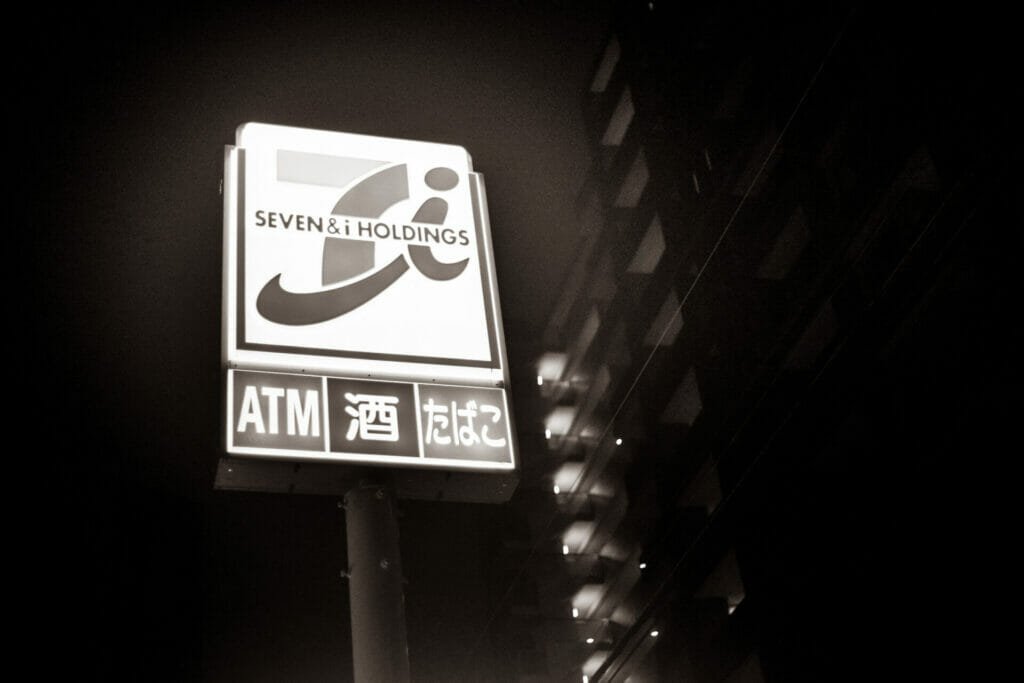The street running past my apartment building has no name. This is neither a fluke nor uncommon. Most roads in the area, and in fact most roads in Japan, aren’t named.
Those that have names generally have (or had) some sort of special significance, such as the old Nakasendo, a nearby historical route connecting Kyoto and Tokyo. It’s been around since Kyoto was the capital city and Tokyo was still called Edo.
Given the general dearth of street names, a question arises—how do addresses work in Japan? A natural question if you’re used to addresses depending on street names and numbers. There’s a system to it, though it may be perplexing at first. I didn’t really understand it until I moved to Tokyo and had to figure it out.
In Japan, addresses work like a set of nested circles, with each subsequent part representing a section of the area preceding it.
Let’s look at an address as an example.
〒330-0064 埼玉県さいたま市浦和区岸町7丁目10−23
330-0064 (postal code), Saitama Prefecture, Saitama City, Urawa Ward, Kishi town/neighborhood, district 7, block 10, building 23
Within Japan, first you’ve got the prefecture, then the city in the prefecture, then the ward within the city, and so-on all the way down to the building number, and even the unit or apartment number (if applicable).
Let’s look at it visually. First, Japan:

Second: Saitama Prefecture
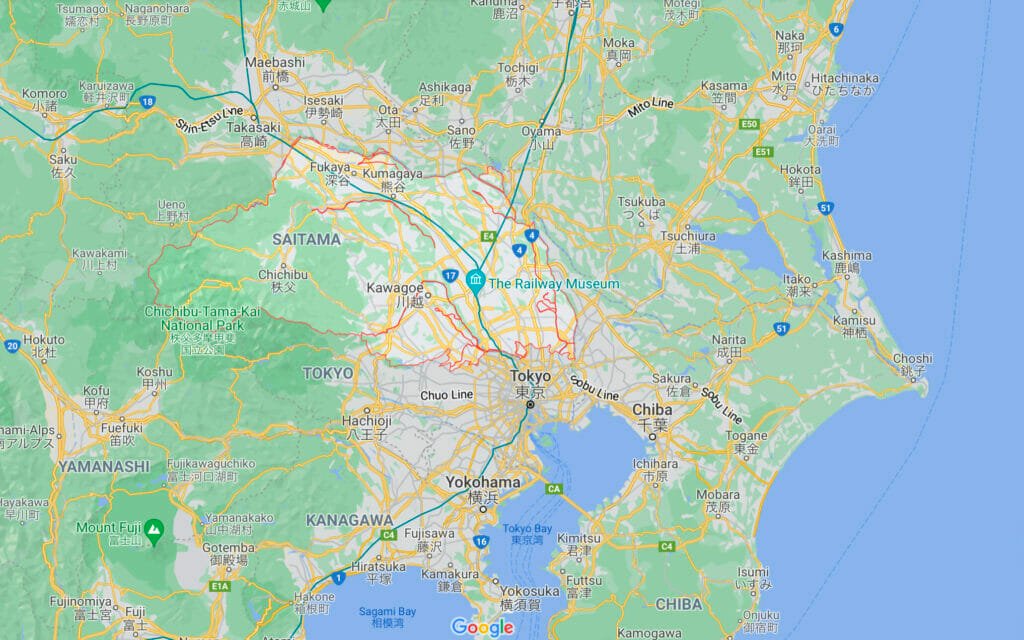
Third: Saitama City
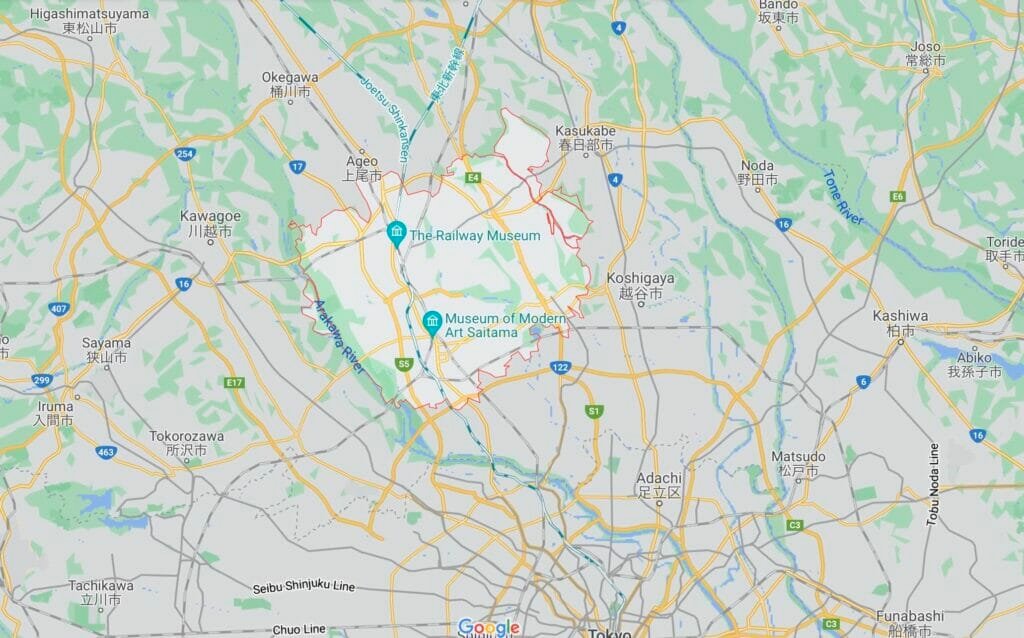
Fourth: Urawa Ward

Fifth: Kishi neighborhood

Sixth: District 7
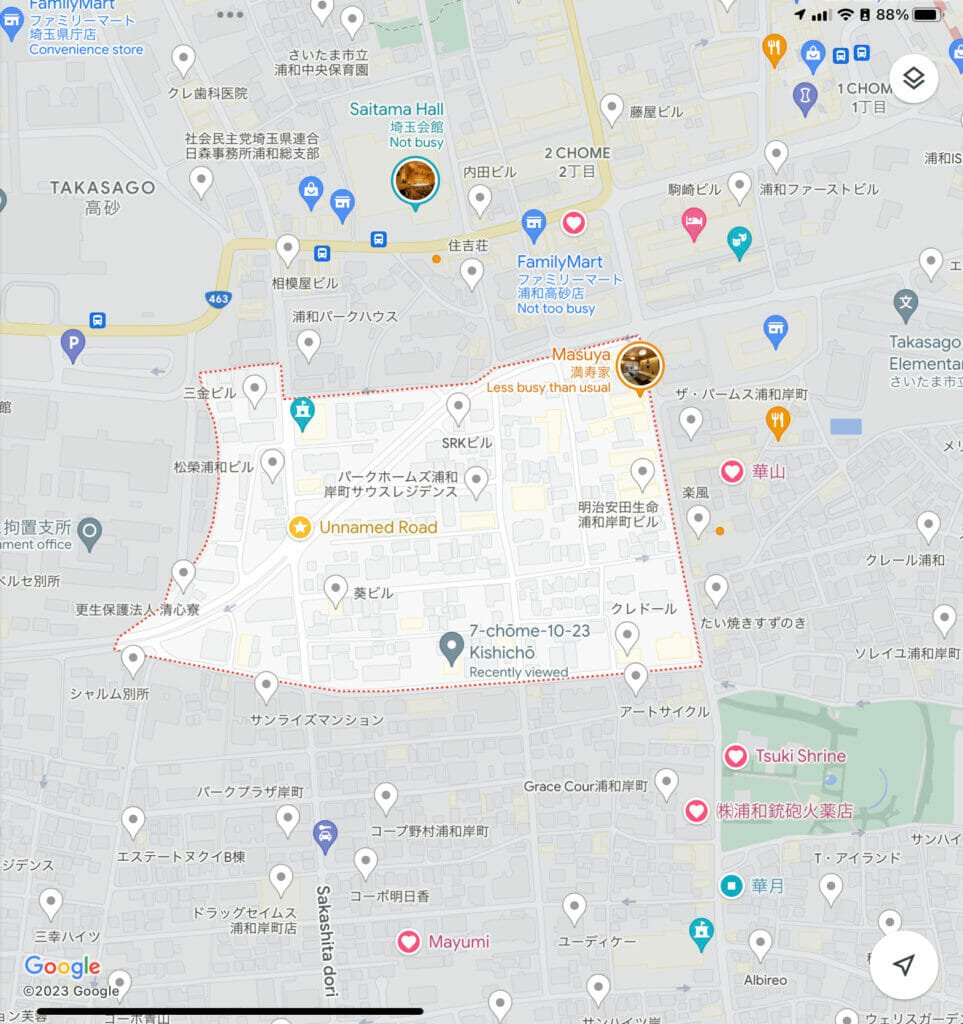
Seventh: Block 10
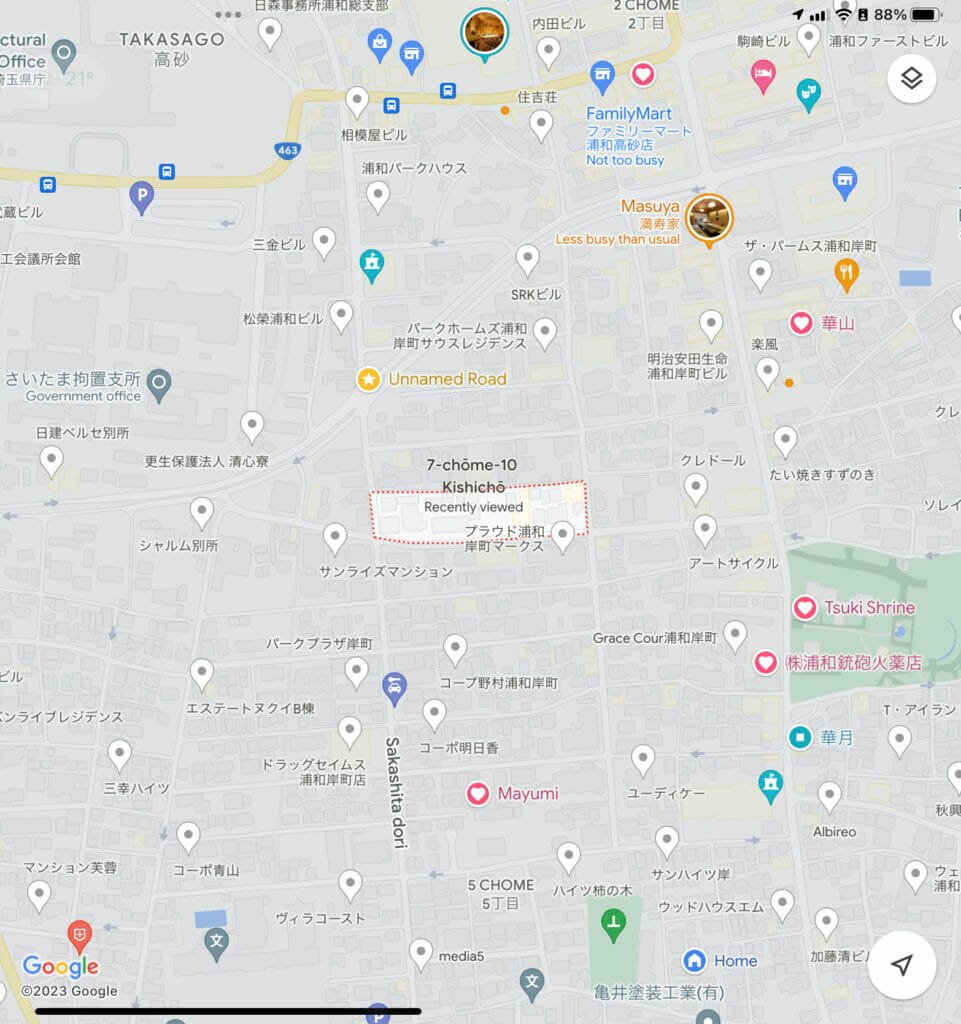
Eighth: Building 23
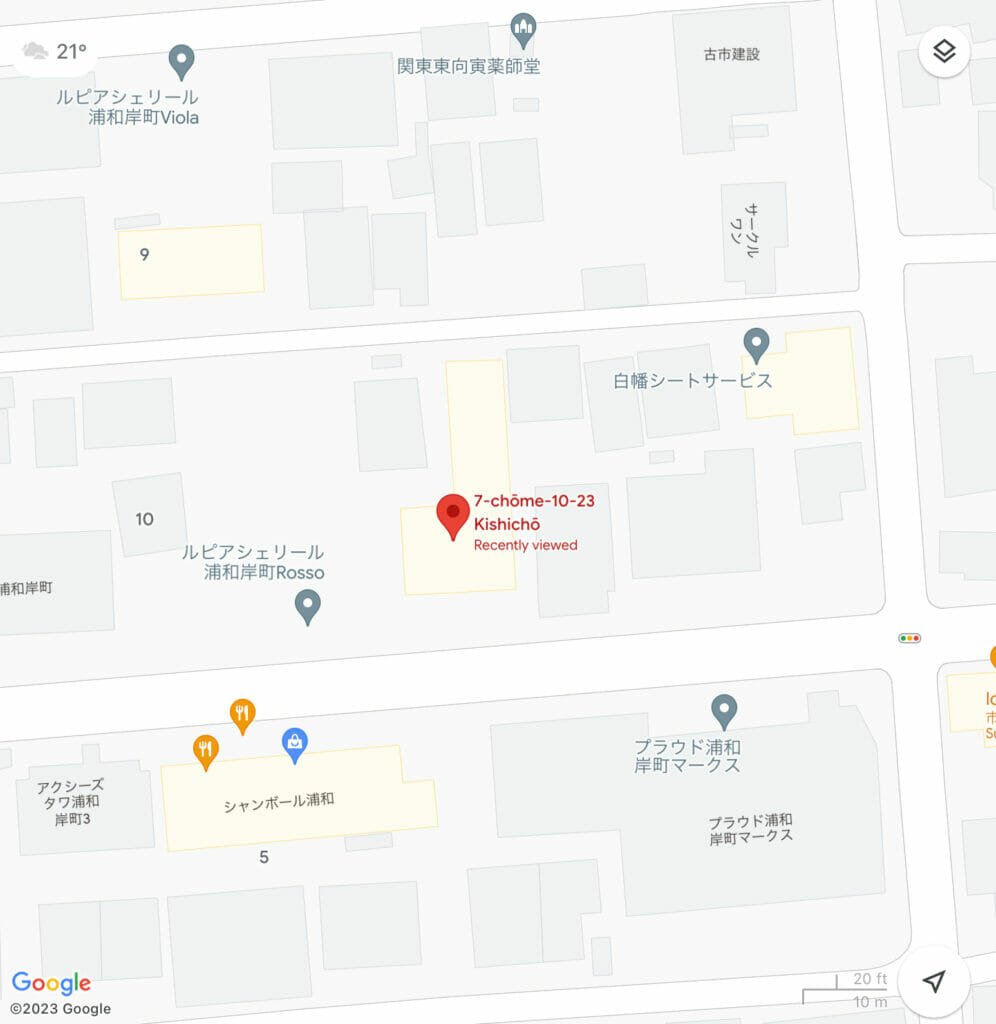
Which puts us at a nearby 7-Eleven:
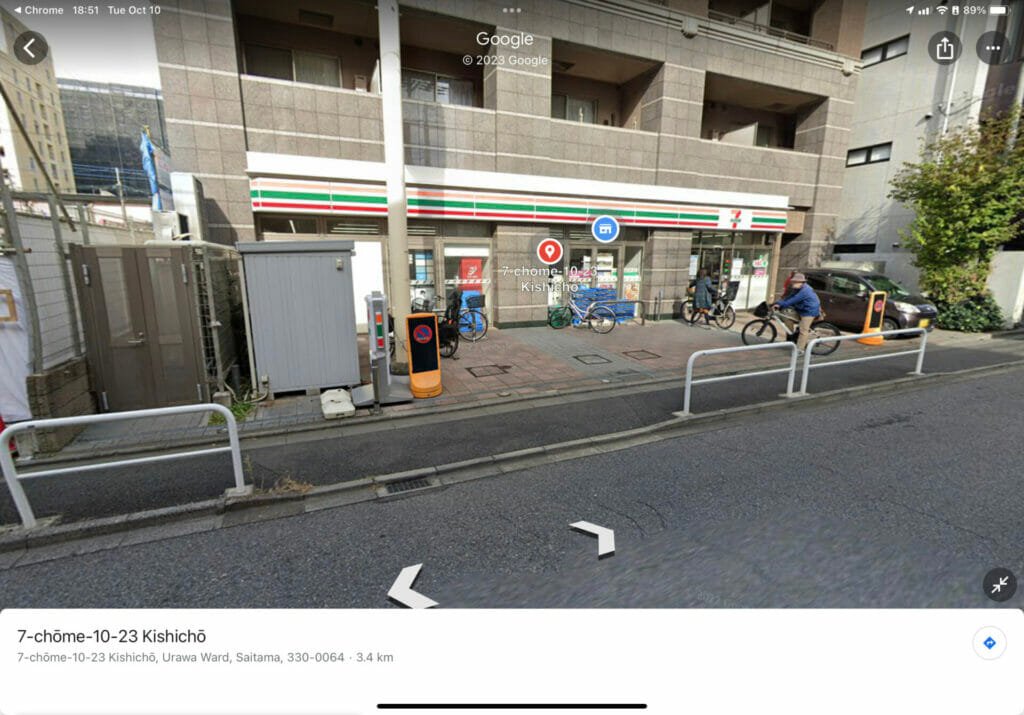
Of course, being in a large city in an even larger metropolitan area, this is a complex and particularly specific address. Elsewhere in Japan, you might find an address that’s notably simpler. Let’s take, for example, the location of a random soba shop in Ishikawa Prefecture. The address is simply:
〒923-0186 石川県小松市大杉町手打ちそばもとや
923-0186 Ishikawa Prefecture, Komatsu City, Osugi Town, Motoya Handmade Soba
Ishikawa Prefecture:

Komatsu City:

Osugi:

The Osugi area includes a fair amount of land, but there isn’t much in it. By adding the business name—in this case Motoya Handmade Soba—you’ve got all the specificity you need for the post office or navigation app to know where it is. Besides, districts and wards and block numbers don’t exactly mean much when the area looks like this:

As unfamiliar as the Japanese address system might initially be and as confusing as it might initially seem, it’s pretty logical. Of course, it doesn’t help you much if you don’t have a map to consult or extensive knowledge of an area already in your head, but that’s true of most address systems.
I’ve seen some people call it weird or strange, but that’s lazy and unfair. In life, both abroad and in general, it is often useful to ask if the things that strike us as odd are actually odd, or if they’re just unfamiliar. Is it weird or just different? Almost always, the latter is the answer, and either way, it’s an opportunity to learn something new.

